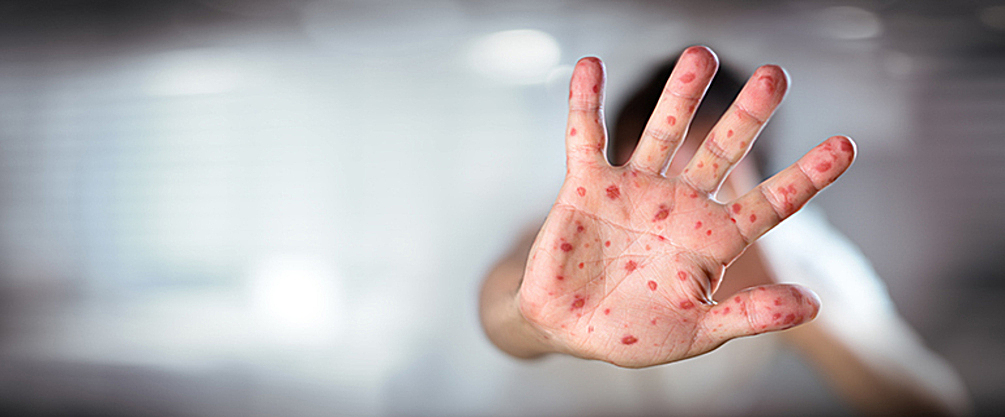
In 2000 the Centers for Disease Control and Prevention (CDC) declared that measles, a nationally notifiable disease in the United States requiring healthcare providers and laboratories to report all diagnosed cases since 1912, was eliminated and eradicated meaning there had been an absence of continuous disease transmission for greater than 12 months. Now according to the CDC, the virus has been detected in 22 states. Unfortunately, this resurgence is because a myth, religion, and politics are making measles great again in America.
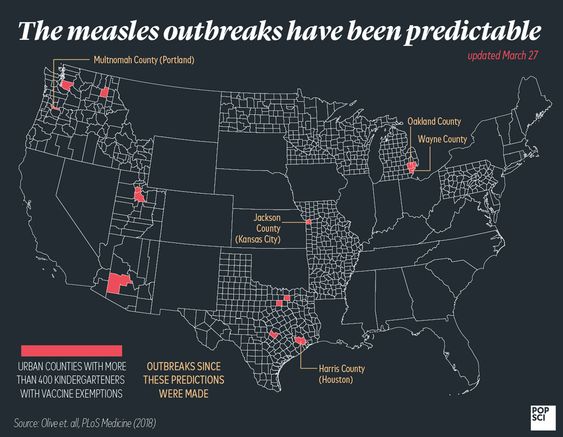
Measles is a highly infectious disease, symptoms usually develop 10–12 days after exposure to an infected person and last 7–10 days. It usually starts with fever, runny nose, cough, red eyes, and sore throat. Small white spots known as Koplik’s spots may form inside the mouth two or three days after the start of symptoms. A red, flat rash which usually starts on the face and then spreads to the rest of the body typically begins three to five days after the start of symptoms. Common complications include diarrhea (in 8% of cases), middle ear infection(7%), and pneumonia (6%). Less common but possible symptoms are seizures, blindness, and inflammation of the brain.

It is an airborne disease most commonly spread through the coughs and sneezes of infected people but also through contact with saliva or nasal secretions. Nine out of ten people who are not immune and share living space with an infected person will be infected. Infected people can infect others from four days before to four days after the start of the rash, and most people cannot be infected more than once.
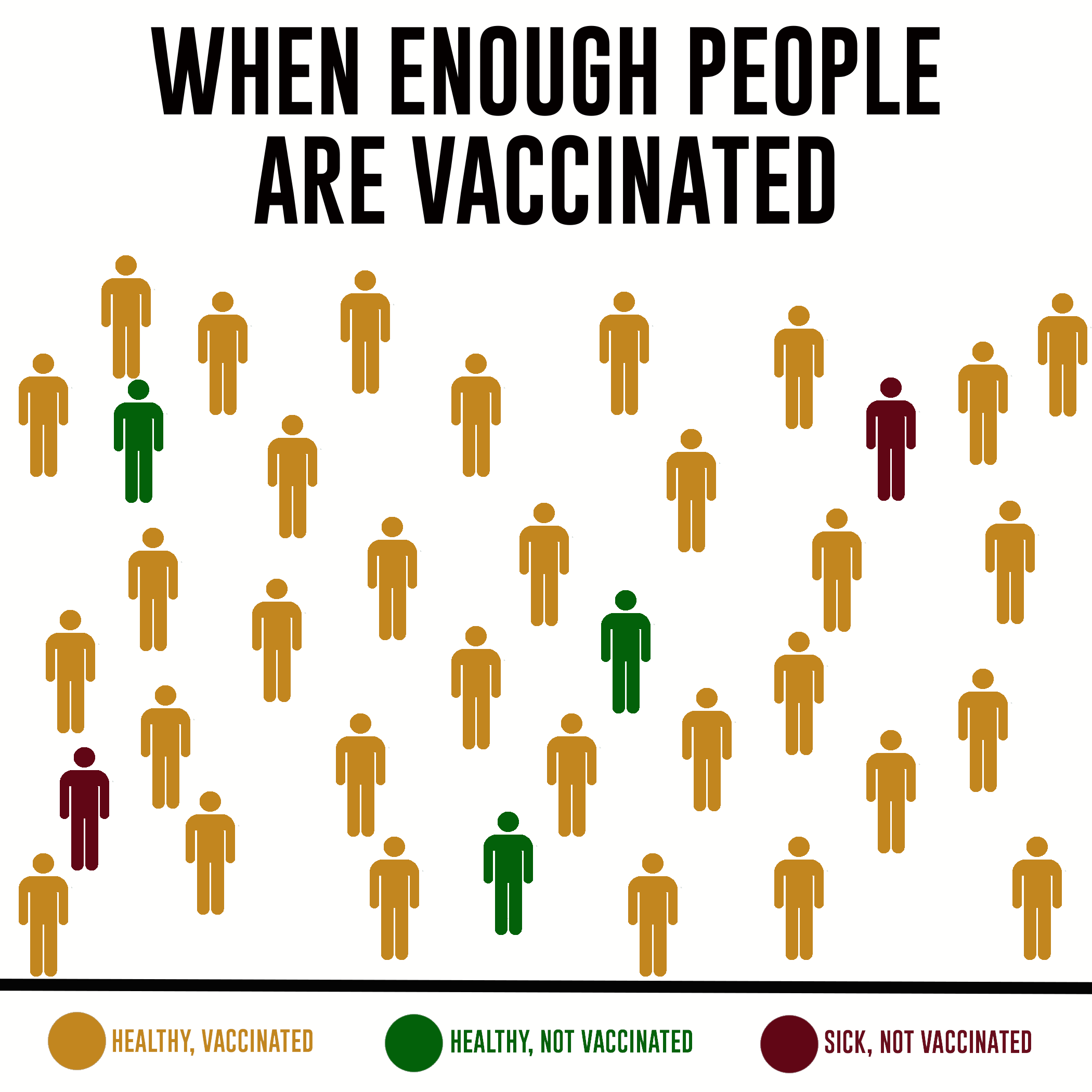
Before a measles vaccine was available nearly all children got measles by the time they were 15 years of age. An estimated 3 to 4 million people in the United States were infected each year, an estimated 400 to 500 people died each year, 48,000 were hospitalized each year, and 1,000 suffered encephalitis (swelling of the brain) each year from measles. In 1978, the CDC set a goal to eliminate measles from the United States by 1982. Although this goal was not met, the widespread use of the measles vaccine drastically reduced the disease rates.
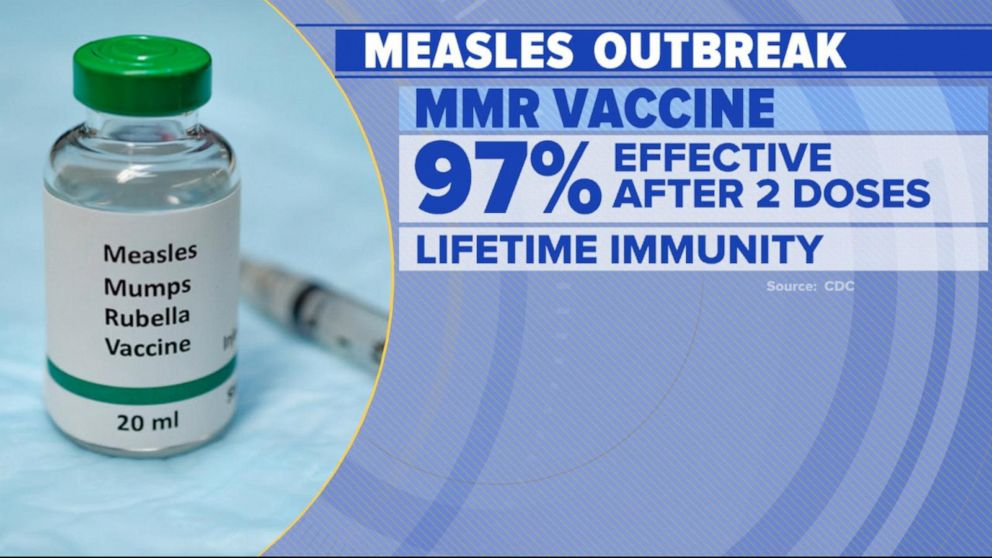
By 1981, the number of reported measles cases was 80% less compared with the previous year. However, a 1989 measles outbreak among vaccinated school-aged children prompted the Advisory Committee on Immunization Practices (ACIP), the American Academy of Pediatrics (AAP), and the American Academy of Family Physicians (AAFP) to recommend a second dose of the MMR measles vaccination for all children. Following the widespread implementation of this recommendation and improvements in first-dose MMR measles vaccination coverage, measles was declared eliminated from the United States in 2000.
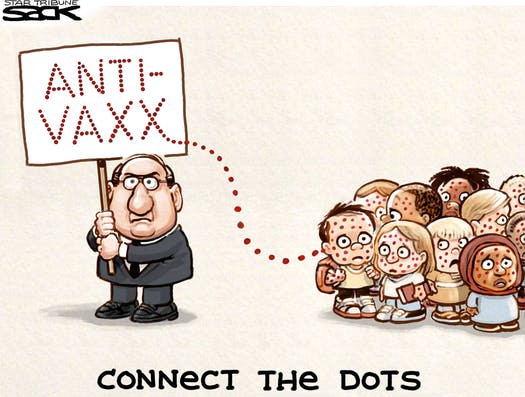
There is a DEFINITE connection between the rise in children not getting vaccinated and the resurgence of measles
Today measles has returned to the United States with 695 cases surpassing the previous high of 667 set in 2014. 695 is the highest annual number recorded since the disease was declared eliminated in America in 2000. As of April 19, 22 states had reported measles cases to the CDC in 2019: Arizona, California, Colorado, Connecticut, Florida, Georgia, Illinois, Indiana, Iowa, Kentucky, Maryland, Massachusetts, Michigan, Missouri, Nevada, New Hampshire, New Jersey, New York, Oregon, Texas, Tennessee, and Washington.

Not all of these states have outbreaks some have isolated cases. Only parts of New York, Washington, New Jersey, California, and Michigan have outbreaks, which are defined as three or more cases in a cluster. But already we’ve seen one outbreak spark another. Michigan public health officials confirmed that their outbreak began when a man caught measles in Brooklyn and then traveled to the Detroit area.
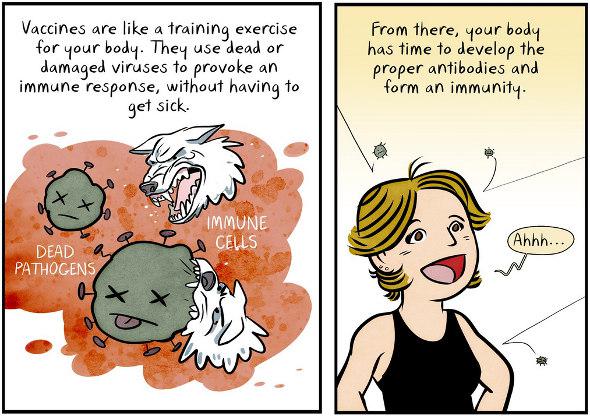
This is the MEDICAL FACT about vaccines that you don’t hear from anti-vaxers who spread myths and medical quackery
Measles has been able to make a comeback because people, mostly children, are not being vaccinated. It’s no coincidence that Mississippi and West Virginia, two states with high measles vaccination rates, have not had any outbreak or even an isolated case of the measles. 99 % of kindergartners in Mississippi and 98 percent of kindergartners in West Virginia had their MMR measles vaccination shots in the 2014-’15 school year. These figures are much higher than the national averages for measles vaccinations.
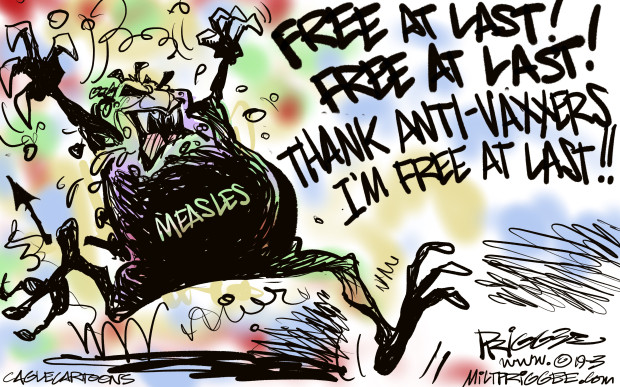
This is what happens when parents refuse to vaccinate their children
Since 2000 measles infections in America mostly began the same way: someone brings in measles from a foreign country and spreads it to unvaccinated American. Although the nation-wide measles vaccination rate in the U.S. is 91.9 percent, there are pockets where the rates dip below that. “As soon as measles vaccination coverage drops below 95 percent outbreaks are inevitable” warned Seth Berkley, the head of Gavi, the Vaccine Alliance, in a recent CNN article.
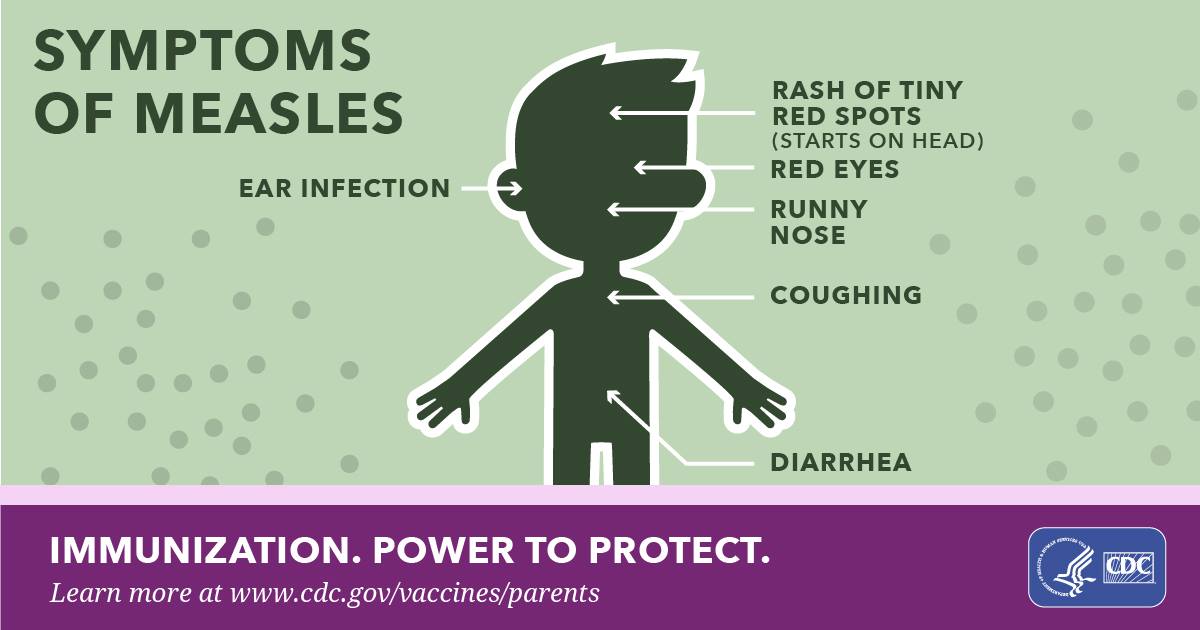
Measles are among the most contagious diseases according to the CDC, “you can catch measles just by being in a room where a person with measles has been, up to two hours after that person is gone,” and “almost everyone who has not had the MMR shot will get measles if they are exposed to the measles virus.” One person with measles among unvaccinated people can infect 12 to 18 others, such high contagion risk requires a 95% measles vaccinated population to prevent outbreaks of the disease.
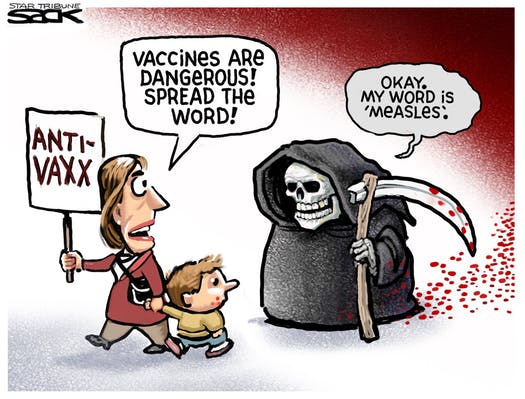
There are 3 reasons why measles vaccination rates are falling in America:
Myth– Soon after the CDC declared in 2000 that the measles was eradicated from America parents across the country were encouraged to question the safety of the measles vaccine. The internet allowed the wide distribution of a paper and study that tied the measles, mumps, and rubella, or MMR, measles vaccine to autism. The study was retracted in 2010, and other research has indicated that there is no link between vaccines and autism, but still, the perception remains that vaccines cause autism. Celebrities including Jenny McCarthy, Robert Kennedy Jr., Alicia Silverstone, and Rob Schneider promoted skepticism about vaccine science, telling parents that the risks of vaccination for their kids outweigh the benefits. McCarthy, in particular, soon became the face of the “anti-vax” movement. The rise of social media, too, allowed anti-vaccination parents to easily share their views and win over others.
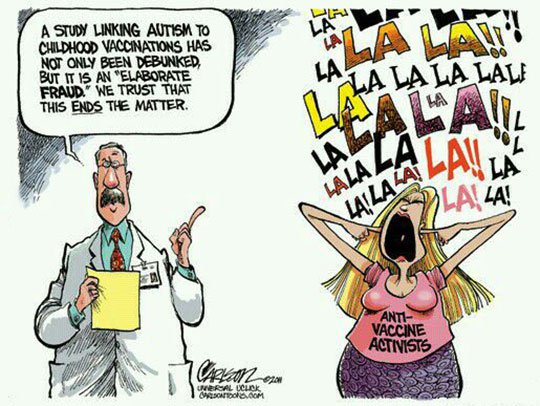
Unfortunately many anti-vaxers refuse to hear, read or listen to the MEDICAL FACTS on vaccinations
Hopefully, a new study published last month will help to finally discredit the lie/myth that vaccines cause autism. The researchers who followed 657,461 Danish children born between 1999 and 2010, stated in the Annals of Internal Medicine: “The study strongly supports that MMR vaccination does not increase the risk for autism, does not trigger autism in susceptible children, and is not associated with clustering of autism cases after vaccination.” In an editorial accompanying the study, Dr. Saad B. Omer, a public health researcher at Emory University, and Dr. Inci Yildirim at the Emory School of Medicine, pointed out that it has been nearly a decade since the small study which set off alarms about a possible link between the vaccine and autism has been refuted and retracted. “In an ideal world,” they wrote, “vaccine safety research would be conducted only to evaluate scientifically grounded hypotheses, not in response to the conspiracy du jour.”
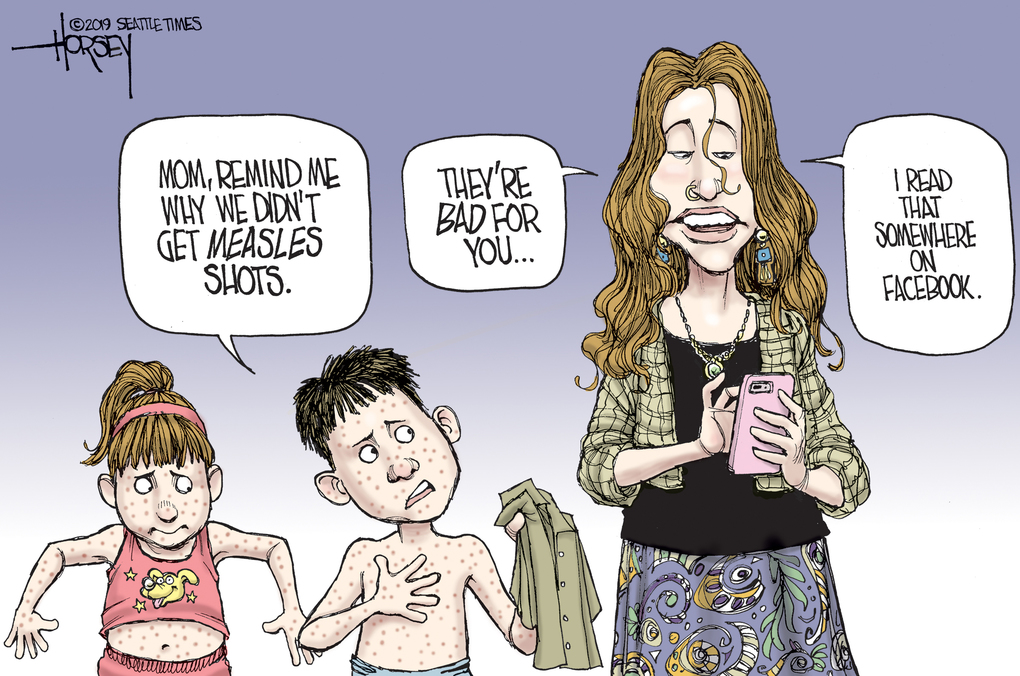
The president of the American Academy of Pediatrics, Dr. Kyle E. Yasuda, wrote to the chief executives of Google, Facebook and Pinterest, urging further action in “an urgent request to work together to combat the dangerous spread of vaccine misinformation online.”
Religion– Many parents who choose not to vaccinate do so on religious grounds, because some vaccines were derived using aborted fetal tissue. During a rubella epidemic in the 1960s, Stanley Plotkin found that about 1% of women in a Philadelphia hospital elected to abort fetuses infected with rubella. Plotkin was able to isolate the rubella virus in an aborted fetus’ kidney. The cell lines that Plotkin used are still employed today, as the cells can be divided over and over again and still produce cells necessary for the vaccine. No more fetal cells are needed to carry on making these vaccines. Still, many conservative religious groups choose not to administer the MMR vaccine due to its origins in abortion.
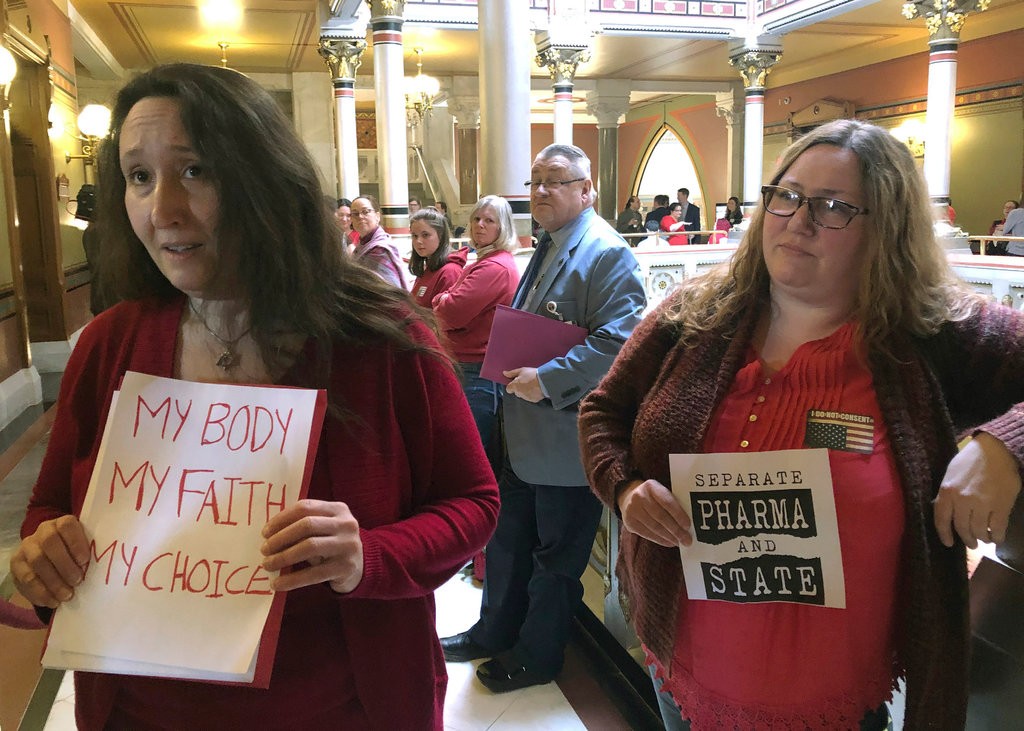
This is the height of hypocrisy. Pro-life activists who want the government to have control over the human body to prevent abortions, want the same government to have no control over the human body to save the lives of people already born!!! Susan Haigh/Associated Press
Politics– All 50 states have laws requiring vaccines for children entering school, but almost every state allows vaccine exemptions for people with religious beliefs against vaccine immunizations, and 17 states currently grant philosophical exemptions for those opposed to vaccines because of personal or moral beliefs. The exceptions are Mississippi, California, and West Virginia, which have the strictest vaccine laws in the nation, allowing only medical exemptions. If the U.S. is going to re-rid America of the measles the other 47 states must follow their lead.

Parents thinking only about the health of their own children is a DANGER to the health of ALL children
In 45 states, even without an exemption, kids can be granted “conditional entrance” to school on the promise that they will be vaccinated, but many schools don’t always bother to follow up. There is plenty of evidence to show that when you make it easier for parents to opt out of their vaccine shots, the rates of vaccine exemptions tend to be higher, and the higher vaccine exemptions are the higher the risk of infection and outbreak of disease. Since measles is so contagious the percentage of the measles vaccinated population must be above 95% to keep it from spreading through the population. This is a condition known as “herd immunity” preventing the disease from becoming an outbreak by disrupting the chain of infecting unvaccinated people. This is possible when 95% of the people the disease attempts to infect have had their measles vaccination.
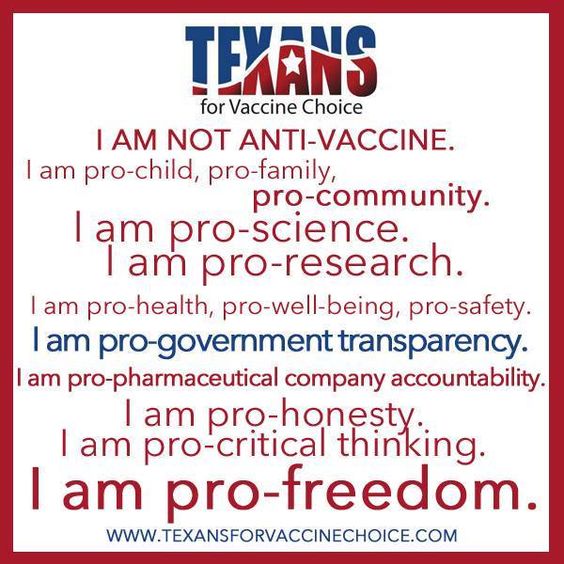
Unfortunately conservative political ideology is replacing medical science
Increasingly the rhetoric and principles of conservative politics are being used to justify irresponsible and unhealthy vaccine exemption legislative law proposals. Texans for Vaccine Choice is an example. Their website proudly proclaims that this is about “freedom,” saying that “we promote the preservation of personal liberties and informed consent by opposing measures to limit vaccine choice rights or discriminate against those who exercise such rights.” Jackie Schlegel, founder of Texans for Vaccine Choice says mandatory vaccinations are lawmakers “reaching their hands into our homes and taking our rights.” Anti-vaxers make allies of conservative and libertarian state legislators, by invoking the magic words of “parental choice” and “liberty.” They argue that it’s not about vaccines but rather about “FREEDOM!” from evil government mandates.

According to the American Academy of Pediatrics, at least 20 states have introduced bills this year that would broaden the reasons why parents can exempt kids from getting vaccines even if there isn’t a medical need for it, and require doctors to provide information on the risks of vaccines. A study published last year on the state of the anti-vaccine movement in the United States showed that over the previous nine years, the number of people claiming vaccine exemptions for “philosophical belief” had gone up in 12 of the 18 states allowing such exemptions.

This is the world that anti-vaxers are creating for themselves
The myth, religion, and politics of vaccinations are all based on good intentions that are leading to the bad destination of disease infection and outbreak. Dr. Sean O’Leary, a Colorado pediatrician who studies infectious diseases and vaccines, summed it up perfectly “They think they’re doing the right thing, the problem is, they’re basing their beliefs on misinformation and pseudoscience.”

This is the wall that President Trump needs to build, a wall whose bricks are vaccination immunization shots that will act as a barrier to infection and disease making America measles free again
Liberals must get over the obsession that man-made medical science can’t be fully trusted, that natural homeopathic medicine should be fully trusted. Faith-believers must check their faith-based opinion of vaccinations at the door of the fact-based medical science of vaccinations. Conservatives must prevent their obsession with having no government regulations from blinding them to the preservation of life that mandatory vaccinations provide. And all Americans need to make sure that they themselves are VACCINATED!!!



